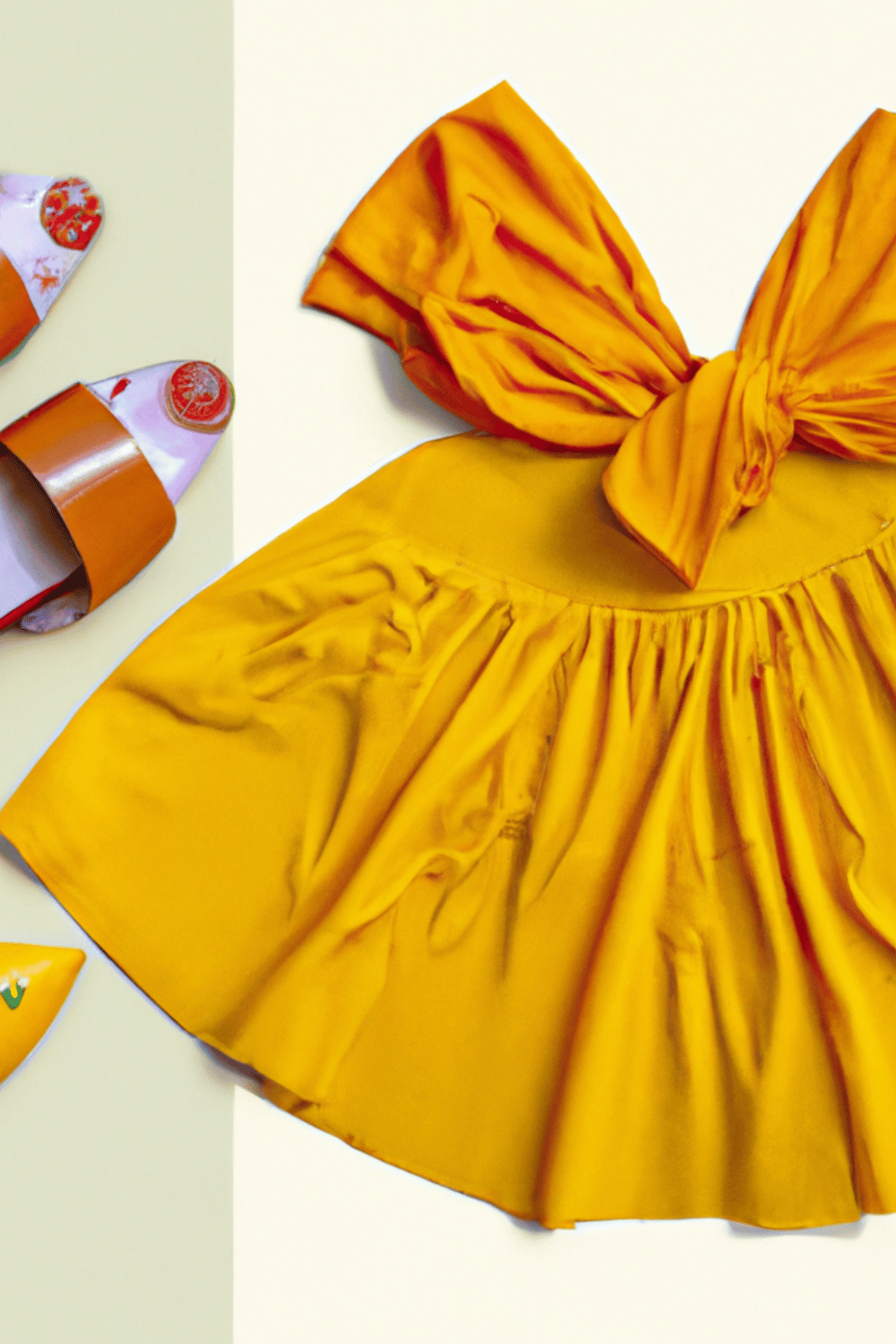Introduction to Sustainable Fashion
Greetings, fellow fashion aficionados! Have you ever taken a moment to contemplate the impact your wardrobe has on our planet? It’s time to embark on a journey through the realm of style with a conscience, where sustainability and fashion converge in perfect harmony. Allow me to introduce you to the captivating world of Sustainable Fashion Brands.
The Emergence of Sustainable Fashion
Picture this: the fashion industry awakening like a majestic phoenix from the ashes of fast fashion’s wasteful practices. This transformation wasn’t an overnight sensation but a gradual and purposeful shift. It’s a movement that’s been steadily gaining momentum, fueled by a growing global awareness and an insatiable thirst for change.
The roots of sustainable fashion stretch back to the mid-20th century, with early advocates championing ethical practices and environmentally friendly materials. However, it wasn’t until the late 20th and early 21st centuries that sustainable fashion truly began to shine in the mainstream fashion landscape.
Consumers, armed with knowledge and a desire for conscious consumption, have played a pivotal role in this shift. They demand transparency, ethical sourcing, and sustainable practices from the brands they support. As a result, sustainable fashion has evolved from a niche market to a burgeoning industry, challenging the status quo and proving that fashion and sustainability can go hand in hand.
Today, sustainable fashion brands are redefining the industry, embracing innovation, and showcasing that style doesn’t have to come at the expense of our planet. From eco-friendly materials to fair labor practices, these brands are leading the charge towards a more responsible and stylish future. So, let’s dive deeper into this world of sustainable fashion and discover how you can be a part of the movement.
History of Sustainable Fashion
Picture it: The 60s and 70s. The world was engulfed in social and environmental revolutions. Amidst this backdrop, seeds of sustainable fashion were being sown. An earthy undercurrent, it began as a counter-movement to the growing disposable culture. It was an era of bold colors and psychedelic patterns but also an era of burgeoning consciousness about the Earth and her needs.
During this period, brands such as Patagonia and Esprit started making waves, combining their stylish offerings with a new focus on ethics and sustainability. Initially considered a fringe trend, these pioneers saw the value in moving away from damaging practices long before they became mainstream. They embodied a fusion of style and consciousness that was ahead of its time, paving the way for a future of more considerate fashion.
Early Pioneers of Sustainable Fashion
Patagonia, the stalwart outdoor brand, adopted sustainability as a core philosophy since its inception in the 1970s. From implementing a recycling program for their polyester fleece clothing to investing in organic cotton, they were vanguards in weaving together fashion and sustainability.
Another pioneer, Esprit, launched its Ecollection line in the late 80s to address environmental concerns, a bold move that sent ripples throughout the fashion industry. They were among the first to prove that ethical practices and commercial success weren’t mutually exclusive.
And let’s not forget about Katharine Hamnett, who turned fashion into a billboard for activism with her iconic slogan tees. Her audacious messages and ethical manufacturing practices showed that fashion could be a platform for change.
Through the years, the flame these pioneers ignited has become a blazing beacon for the fashion industry. While we’ve come a long way since the 70s, the path they paved continues to guide the industry toward a more sustainable future.
What is Sustainable Fashion?
You might be wondering, “What exactly is sustainable fashion?” Well, think of it as the superhero of the fashion world, fighting against environmental destruction and unethical labor practices. It’s the fashion that prioritizes the planet and its inhabitants over profits and trends.
Sustainable fashion embraces eco-friendly materials, ethical manufacturing processes, and the concept of longevity. It’s all about creating clothing that doesn’t harm the Earth or exploit its people. Imagine your clothes having a tiny cape, ready to save the world, one outfit at a time!
Why Choose Sustainable Fashion?
Once upon a time, sustainable fashion was considered a quirky trend, something for the eco-conscious few. But today, it’s not just a trend; it’s a necessity and a responsibility we all share.
Environmental Impact
Our beautiful blue planet is in crisis mode. We’re talking industrial pollution, plastic waste, and deforestation on a grand scale. Where does fashion fit into this grim picture? Well, brace yourself for this shocker: fashion is the second most polluting industry globally, right after oil. It’s like a toxic fashionista wreaking havoc!
Fast fashion, with its throw-away culture and rapid turnover of styles, contributes massively to this mess. It releases greenhouse gases, and churns out mountains of waste, and even the dyeing process alone is a major water pollutant. Sustainable fashion steps in to tackle these issues head-on. It’s like the Captain Planet of the fashion world, fighting pollution and wastefulness with eco-friendly materials, recycling, and water conservation.
Ethical Considerations
The story behind your clothes matters just as much as their style. Unfortunately, many fast fashion tales involve exploitation and inhumane working conditions.
Sustainable fashion aims to rewrite these stories, ensuring fair wages, safe working environments, and no child labor. By choosing sustainable fashion, you’re not just buying clothes; you’re supporting a cause, advocating for social justice, and saying “no” to the ugly side of fashion.
Economic Factors
Now, let’s talk money. Sustainable fashion often comes with a higher price tag upfront compared to fast fashion. But here’s the plot twist: consider the cost per wear.
Sustainable fashion brands invest in high-quality materials and craftsmanship, creating clothes designed to stand the test of time. Fast fashion, on the other hand, is designed for quick obsolescence. In the long run, investing in fewer, higher-quality pieces can actually save you money. It’s like building a wardrobe that not only looks good but also saves the world and your wallet.
So, why choose sustainable fashion? Because our planet can’t endure fast fashion’s antics any longer. Because every worker deserves dignity and fair treatment. Because the choices you make today shape the world of tomorrow. If that isn’t reason enough, well, I don’t know what is!
Spotlight on Sustainable Fashion Brands
Like picking a good avocado, choosing the right sustainable brand can be challenging. That’s why we’re here to help! Let’s shed some light on a few more brands making strides in sustainable fashion.
People Tree
Story and Sustainability Practices
People Tree, hailing from the UK, is one of the ethical and sustainable fashion trailblazers. Their mantra? Being fair to people, fair to fashion, fair to the world.” The brand is committed to organic farming, fair trade, and artisan skills, proving that fashion and ethics can be stitched together beautifully. Not only that, their clothes are tree-mendously chic!
Awards and Recognition
People Tree’s dedication hasn’t gone unnoticed. They were the first fashion company to be awarded the World Fair Trade Organisation product label, demonstrating excellence in both ethical and sustainable fashion. A round of applause for People Tree, please!
Eileen Fisher
Story and Sustainability Practices
American designer Eileen Fisher has been creating simple and timeless clothing since the 1980s. But did you know their commitment to sustainability is just as strong as their commitment to style? Their vision for sustainability is holistic, addressing human rights and the environment in equal measure. From organic cotton to their recycling program, ‘Renew’, they’re serious about making fashion that feels good and does good.
Awards and Recognition
Eileen Fisher is a recipient of the American Sustainable Business Council’s Sustainies Award in 2015, further proving that they’re not just a leader in the fashion industry but also in sustainable business practices.
Reformation
Story and Sustainability Practices
Reformation is an LA-based brand that’s as cool as it is conscious. They design effortless silhouettes that celebrate the feminine figure while maintaining a resolute commitment to sustainability. Their process starts with sustainable fabrics, continues with ethical manufacturing practices, and ends with offsetting their carbon emissions. They believe “being naked is the #1 most sustainable option. We’re #2.”
Awards and Recognition
Reformation’s commitment has earned them numerous accolades, including Fast Company’s ‘Most Innovative Companies’ award in 2020. They’re not just turning heads on the street; they’re turning the tide in the industry!
Patagonia
Story and Sustainability Practices
Patagonia is like the granddaddy of sustainable fashion. This outdoor brand has been rocking the eco-style since the ’70s, with initiatives like recycling polyester and promoting fair labor.
Awards and Recognition
Did you know Patagonia won the Accenture Strategy Award for Circular Economy Multinational? They’re not just about talk; they walk the green walk!
Stella McCartney
Story and Sustainability Practices
Stella McCartney is not just a designer; she’s a revolutionary. Her brand is a testament that luxury and sustainability can go hand-in-hand. Talk about being posh and green at the same time!
Awards and Recognition
Stella isn’t just making headlines; she’s making history by bagging awards like the Green Carpet Challenge Brand Mark.
Everlane
Story and Sustainability Practices
Everlane is your friendly neighborhood sustainable brand. They believe in radical transparency, showing exactly how much everything costs. Kind of like a backstage pass to the fashion world.
Awards and Recognition
Everlane may not be boasting of an award showcase, but their ethical practices and transparency sure deserve a standing ovation.
Countries Embracing Sustainable Fashion
From the bustling streets of New York to the quiet fjords of Sweden, sustainable fashion has become a global movement. Let’s pack our virtual bags and embark on a journey to discover countries that are leading the charge.
Sweden: A Sustainable Fashion Hub
Why Sweden?
Sweden, a nation known for its beautiful landscapes and innovative designs, is a powerhouse in the sustainable fashion world. The Swedish government even encourages sustainable practices with a tax-break system for repairs, promoting a ‘use, reuse, and recycle’ culture. They’re proving that it’s indeed ‘hip to be square.’
Notable Swedish Sustainable Brands
The Swedish brand, Nudie Jeans, has a fantastic concept where jeans come with a promise of free repairs. Talk about lifetime support! Another notable brand, Filippa K, has launched a project aimed at 100% circularity. Not to mention House of Dagmar, the 2020 ELLE Sustainability Award winner. Sweden, you’re setting the ‘green’ bar high!
Impact on Global Fashion
Sweden’s sustainability practices influence brands worldwide, proving that success doesn’t have to come at the Earth’s expense. They’re transforming the industry one sustainable brand at a time.
UK: Pushing the Boundaries of Sustainability
Why UK?
The UK, the birthplace of the industrial revolution, is now revolutionizing the industry in a different way – through sustainable fashion. The British Fashion Council even established the Institute of Positive Fashion to promote better practices.
Notable UK Sustainable Brands
Take a bow, Christopher Raeburn. This brand, known for its remade ethos, bagged the 2015 UK Fashion and Textile Award for Sustainability. Mother of Pearl, another British brand, is well-known for its sustainable and ethical practices, which led to it winning the 2017 British Emerging Talent award.
Impact on Global Fashion
The UK’s approach reshapes the global fashion narrative, showing that tradition and innovation coexist harmoniously.
USA: Fostering Eco-Conscious Fashion
Why USA?
The USA, a nation synonymous with opportunity, is creating new opportunities in the realm of sustainable fashion. From small-scale artisans to major fashion houses, the conversation is shifting toward sustainability.
Notable US Sustainable Brands
Reformation is an LA-based brand making significant waves in the industry. Their commitment to sustainability earned them the Sustainable Business Award. Another commendable mention is Patagonia, known for its commitment to the environment and fair trade.
Impact on Global Fashion
The USA’s shift towards sustainable fashion is setting a precedent for other major fashion markets, proving that size doesn’t matter when it comes to sustainability.
Denmark: Pioneer in Sustainable Fashion
Why Denmark?
Denmark, a small Nordic nation, is making a big splash in the sustainable fashion scene. Copenhagen, its capital, hosts the biannual Copenhagen Fashion Summit, the leading event in sustainable fashion.
Notable Danish Sustainable Brands
Ganni, a family-run, Copenhagen-based brand, is big on responsibility. They’re committed to reducing their CO2 emissions and water impact. Then there’s Carcel, a brand transforming women’s lives in prison through fair wages and skill development.
Impact on Global Fashion
Denmark’s commitment to sustainable fashion and its design influence leave an indelible mark on the industry.
Each of these countries, with their unique approaches and initiatives, contributes to the vibrant tapestry of sustainable fashion. From policy changes to innovative brands, they’re championing the cause of sustainability on the global stage.
Conclusion: The Future of Sustainable Fashion
As we reach the end of this sustainable fashion journey (for now), one thing is clear: Sustainable fashion isn’t just a trend; it’s the future. We’ve journeyed through its history, understood its importance, admired brands leading the charge, and visited countries propelling the movement.
Sustainable fashion is taking root deeper each day, growing from a niche into a norm. It’s evolving from an option into a necessity. Fashion brands are recognizing this and pivoting towards more sustainable practices. Governments, too, are chipping in, incentivizing eco-friendly practices and tightening regulations around ethical manufacturing.
In the future, we can expect to see even more innovative solutions to fashion’s environmental impact. Biodegradable materials, zero-waste manufacturing, closed-loop recycling – the possibilities are as endless as they are exciting. But let’s remember; the goal isn’t just to minimize the negative impact but to create a positive one.
However, the true future of sustainable fashion lies in the hands of us the consumers. We have the power to shape the industry with our choices. Every time we choose to buy less, buy better, and buy fair, we vote for the kind of world we want to live in.
Remember, a sustainable world doesn’t require us all to be perfect, but it does require us all to try. So, whether you’re a seasoned sustainability expert or a newbie on this journey, remember that every step counts. Your closet has the power to change the world, as do you. So, let’s wear that power responsibly.
Together, we can ensure that the future of fashion is stylish and sustainable. Now, how’s that for a fashion statement?
But before we wrap up, let’s address some of the burning questions you might still have about sustainable fashion brands.
Frequently Asked Questions
What exactly is sustainable fashion?
Sustainable fashion is an approach to fashion that maximizes benefits to people and communities while minimizing the environmental impact. It covers everything from ethical manufacturing practices to using eco-friendly materials and promoting a circular economy.
Isn’t sustainable fashion expensive?
Sustainable fashion brands can be more expensive upfront due to the use of high-quality materials and fair labor practices. However, these clothes often last longer than their fast fashion counterparts, potentially saving you money in the long run. Plus, you’re investing in a healthier planet and fairer societies!
Are sustainable clothes as stylish as regular clothes?
Absolutely! Sustainable fashion isn’t about sacrificing style for sustainability. Many sustainable fashion brands offer stylish, contemporary designs that can rival any traditional fashion label. It’s all about smart, sustainable style!
How can I transition to a more sustainable wardrobe?
Transitioning to a sustainable wardrobe doesn’t have to happen overnight. Start by buying less and choosing better-quality pieces. Consider buying second-hand or swapping clothes with friends. Support brands that value sustainability and treat their workers fairly. Remember, every little change counts!
Can my fashion choices really make a difference?
Yes, they can! Every time you choose sustainable fashion, you’re casting a vote for the kind of world you want. Your choices can influence brands to adopt more ethical practices, reducing the fashion industry’s environmental footprint and improving workers’ conditions worldwide. Remember, change starts with you!
Let’s continue to thread the path of sustainability in fashion, one stitch at a time.





Pingback: Navigating the World of Sustainable Clothing Brands
Pingback: Three Pillars of Sustainability: A Guide to a Better Future
Pingback: Sustainable Palm Oil: Championing a Greener Planet
Pingback: Sustainable Agriculture: A Green Revolution - Eco Life Wise
Pingback: Sustainable Swimwear: A Deep Dive Into Eco Friendly Choices
Pingback: Eco Friendly Companies: Meet the Eco Super Heroes
Pingback: Sustainable Gifts: An Eco-Friendly Choice - Eco Life Wise
Pingback: Recycled Glass Countertops: The Eco-Friendly and Stylish Choice
Pingback: How to Make Compost: A Guide to a Greener Garden
Pingback: Sustainable Jewelry: The Future of Ethical Fashion - Eco Life Wise
Pingback: Upcycled Clothing: The Journey From Landfill to Runway
Pingback: Recycled Shoes: A Step Towards a Sustainable Future
Pingback: Eco Friendly Toilet Paper: A Cheeky Guide to Going Green
Pingback: Sustainable Lingerie: An Eco Friendly Revolution in Your Drawer - Eco Life Wise
Pingback: Upcycled Clothes: The Art Of Renewing Your Wardrobe | Eco Life Wise
Pingback: What Is Sustainability? Unlocking the Power to Transform Our World
Pingback: Sustainable Architecture: A Guide to the Future of Design
Pingback: Sustainable Fabrics: Charting the Course for Eco-Friendly Fashion
Pingback: 20 Brilliant Ways to Upcycle T Shirts: From DIY to Fashion
Pingback: Sustainable Shoe Brands: A Step Towards a Greener Future
Pingback: Sustainable Bedding: The Ultimate Guide | Eco Life Wise
Pingback: Organic Basics: The Untamed Journey of Green Living
Pingback: Slow Fashion: Strides Toward an Eco Friendly Future
Pingback: Eco Friendly Gifts: A Sustainable Guide | Eco Life Wise
Pingback: Unlock the Secret to Affordable Sustainable Clothing
Pingback: Why Is Fast Fashion Harmful To The Environment? 9 Factors to Consider | Eco Life Wise
Pingback: What Is Sustainable Fashion? 9 Interesting Definitions | Eco Life Wise
Pingback: What Is Slow Fashion And How Does It Differ From Fast Fashion? | Eco Life Wise
Pingback: What Are The Environmental And Social Benefits Of Slow Fashion? | Eco Life Wise
Pingback: How Does Upcycling Reduce Waste And Consumption? 10 Innovative Ways | Eco Life Wise